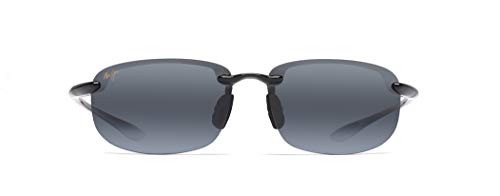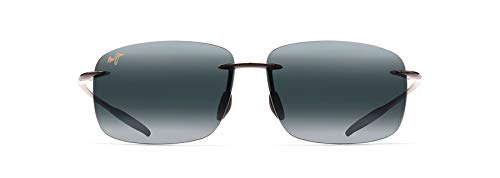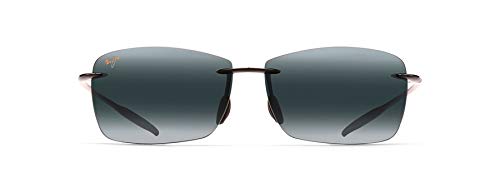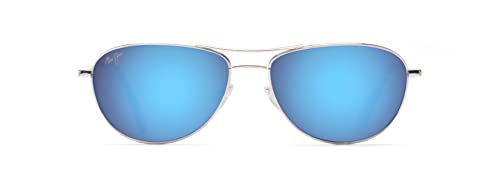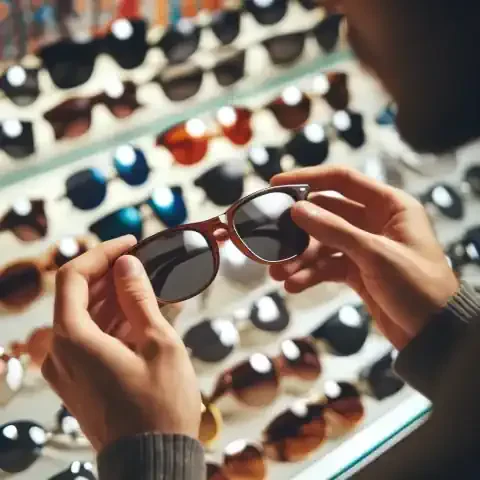Introduction
Sunglasses are far more than just a fashion accessory; they serve as crucial tools for safeguarding our eyes from harmful UV rays and reducing glare, enhancing our visual comfort and clarity. Beyond their functional benefits, sunglasses also play a pivotal role in expressing personal style and fashion preferences.
Importance of Sunglasses in Eye Protection and Style
Eye Protection: The eyes are susceptible to damage from ultraviolet (UV) radiation, which can lead to various eye conditions such as cataracts, macular degeneration, and even ocular melanoma. Sunglasses act as a barrier, shielding the eyes from these harmful UV rays and reducing the risk of long-term damage.
Glare Reduction: Glare from sunlight or reflective surfaces can cause discomfort and temporary vision impairment, particularly in activities such as driving or outdoor sports. Sunglasses with appropriate lens materials can effectively minimize glare, providing clearer vision and enhancing safety.
Prevention of Eye Strain: Excessive exposure to bright sunlight without proper eye protection can lead to eye strain and fatigue. Sunglasses help to reduce the intensity of light reaching the eyes, thus alleviating strain and promoting visual comfort, especially in bright outdoor environments.
Fashion and Style: In addition to their protective functions, sunglasses are widely embraced as a fashion statement. They offer a versatile accessory that complements various outfits and reflects individual personality and taste.
Significance of Lens Material in Sunglasses
The lens material is a critical determinant of sunglasses' performance, durability, and overall quality. Different lens materials offer varying levels of optical clarity, impact resistance, UV protection, and other essential characteristics, influencing both the functionality and aesthetics of sunglasses.
Overview of the Different Types of Lens Materials
Glass Lenses: Traditional and known for exceptional optical clarity, glass lenses provide superior scratch resistance but are heavier and more prone to shattering compared to other materials.
Polycarbonate Lenses: Renowned for their high impact resistance and lightweight nature, polycarbonate lenses offer excellent protection against impact-related injuries and are favored for sports and outdoor activities.
CR-39 Lenses (Plastic): Lightweight and affordable, CR-39 lenses provide good optical quality and are commonly used in fashion sunglasses. However, they are less impact-resistant compared to polycarbonate.
High-Index Plastic Lenses: These lenses are characterized by their thinness and ability to bend light more efficiently, making them ideal for individuals with higher prescriptions. They offer enhanced aesthetics but may come at a higher cost.
Trivex Lenses: Combining the lightweight properties of polycarbonate with the optical clarity of glass, Trivex lenses provide excellent impact resistance and optical quality, making them a versatile choice for various activities.
Understanding the unique characteristics and benefits of each lens material is essential for selecting sunglasses that meet individual preferences and visual needs.
Understanding Lens Materials
Choosing the right lens material for sunglasses involves understanding the properties and characteristics of various materials available. Each type of lens material offers distinct advantages and considerations, impacting factors such as optical clarity, impact resistance, weight, UV protection, durability, and cost.
Definition and Characteristics of Lens Materials
Lens materials refer to the substances used to manufacture the lenses of sunglasses. These materials can range from traditional glass to modern plastics and specialty coatings. Each material has unique properties that determine its suitability for different purposes and preferences.
Glass Lenses: Glass lenses offer exceptional optical clarity, providing a clear and distortion-free view. They are highly scratch-resistant and maintain their clarity over time. However, glass lenses are heavier and more prone to shattering upon impact.
Polycarbonate Lenses: Polycarbonate lenses are lightweight and extremely impact-resistant, making them ideal for sports and outdoor activities where durability is crucial. While they may not offer the same optical clarity as glass, polycarbonate lenses provide adequate vision correction and UV protection.
CR-39 Lenses (Plastic): CR-39 lenses, made from a lightweight plastic material, offer good optical quality and are more affordable than other options. They are suitable for everyday use but may not provide the same level of impact resistance as polycarbonate lenses.
High-Index Plastic Lenses: High-index plastic lenses are designed to be thinner and lighter than standard plastic lenses, making them more comfortable to wear, especially for individuals with higher prescriptions. They offer excellent optical clarity but may come at a higher cost.
Trivex Lenses: Trivex lenses combine the lightweight properties of polycarbonate with the optical clarity of glass. They provide excellent impact resistance, making them suitable for both everyday wear and sports activities.
Factors Influencing the Choice of Lens Material
Several factors influence the selection of lens material for sunglasses, including:
Optical Clarity: The ability of the lens material to transmit light without distortion or aberration significantly impacts visual acuity and comfort.
Impact Resistance: Especially important for outdoor activities and sports, the ability of the lens material to withstand impact reduces the risk of eye injuries.
Weight: Lightweight materials contribute to overall comfort, particularly during extended wear.
UV Protection: Effective UV protection is essential for safeguarding the eyes against harmful UV radiation, which can cause long-term damage.
Durability: The durability of the lens material affects its longevity and resistance to scratches, cracks, and other forms of damage.
Cost: Budget considerations play a significant role in the selection process, as certain lens materials may be more expensive than others.
Understanding these factors and prioritizing individual preferences and needs can help determine the most suitable lens material for specific use cases and lifestyle requirements.
Types of Sunglasses Lens Materials
When selecting sunglasses, the choice of lens material plays a crucial role in determining their performance, durability, and suitability for different activities. Here, we explore the characteristics, advantages, and limitations of five common types of sunglasses lens materials:
Glass Lenses
Properties and Benefits:
Exceptional Optical Clarity: Glass lenses provide unparalleled clarity and minimal distortion, ensuring a crisp and clear view of the surroundings.
Scratch Resistance: Glass lenses are highly resistant to scratches, maintaining their optical quality over time.
UV Protection: Most glass lenses offer excellent protection against harmful UV rays, safeguarding the eyes from potential damage.
Drawbacks and Limitations:
Weight: Glass lenses are heavier compared to other materials, which can cause discomfort during extended wear.
Brittleness: Glass lenses are prone to shattering upon impact, posing a risk of injury if broken.
Cost: Glass lenses tend to be more expensive than alternative materials, making them less accessible for some consumers.
Polycarbonate Lenses
Properties and Benefits:
High Impact Resistance: Polycarbonate lenses are exceptionally durable and shatterproof, making them ideal for sports and outdoor activities where protection is paramount.
Lightweight: Polycarbonate lenses are significantly lighter than glass lenses, offering enhanced comfort for all-day wear.
UV Protection: Polycarbonate lenses provide reliable UV protection, safeguarding the eyes from harmful radiation.
Drawbacks and Limitations:
Optical Clarity: While polycarbonate lenses offer adequate vision correction, they may exhibit slight distortion compared to glass lenses, particularly in higher prescriptions.
Scratch Susceptibility: Although polycarbonate lenses are relatively scratch-resistant, they can still develop surface scratches over time, affecting visual clarity.
Susceptibility to Chemical Damage: Polycarbonate lenses can be damaged by certain chemicals, requiring careful handling and maintenance.
CR-39 Lenses (Plastic)
Properties and Benefits:
Affordability: CR-39 lenses are more cost-effective than glass or high-index plastic lenses, making them a popular choice for budget-conscious consumers.
Lightweight: Plastic lenses are lightweight and comfortable to wear for extended periods.
Optical Clarity: CR-39 lenses offer good optical quality, providing clear vision for everyday use.
Drawbacks and Limitations:
Impact Resistance: Plastic lenses are less impact-resistant than polycarbonate or Trivex lenses, making them more susceptible to damage.
Thicker Profile: CR-39 lenses may be thicker than high-index plastic or Trivex lenses, especially in higher prescriptions, potentially affecting aesthetics.
Limited Durability: Plastic lenses are more prone to scratches and may require more frequent replacement compared to other materials.
High-Index Plastic Lenses
Properties and Benefits:
Thin Profile: High-index plastic lenses are thinner and lighter than standard plastic lenses, offering improved aesthetics and comfort, particularly for higher prescriptions.
Optical Clarity: These lenses provide excellent optical quality, minimizing distortion and aberrations for clear vision.
UV Protection: High-index plastic lenses typically offer reliable UV protection, shielding the eyes from harmful rays.
Drawbacks and Limitations:
Cost: High-index plastic lenses tend to be more expensive than standard plastic or CR-39 lenses, increasing the overall cost of the sunglasses.
Impact Resistance: While high-index plastic lenses are durable, they may not offer the same level of impact resistance as polycarbonate or Trivex lenses.
Reflections: Some high-index plastic lenses may produce more reflections or glare compared to other materials, affecting visual comfort in certain lighting conditions.
Trivex Lenses
Properties and Benefits:
Balanced Performance: Trivex lenses combine the lightweight properties of polycarbonate with the optical clarity of glass, providing a balance of durability and visual acuity.
High Impact Resistance: Trivex lenses offer excellent impact resistance, making them suitable for various activities and environments.
UV Protection: Trivex lenses typically provide reliable UV protection, ensuring optimal eye health in sunny conditions.
Drawbacks and Limitations:
Cost: Trivex lenses may be more expensive than CR-39 lenses, adding to the overall cost of the sunglasses.
Availability: Trivex lenses may be less readily available compared to polycarbonate or standard plastic lenses, limiting options for customization.
Optical Clarity: While Trivex lenses offer excellent optical quality, some individuals may perceive slight distortions compared to glass lenses, particularly in higher prescriptions.
Understanding the unique properties and considerations of each lens material is essential for making an informed decision when purchasing sunglasses, ensuring optimal performance and satisfaction based on individual needs and preferences.
Specialized Lens Materials
In addition to traditional lens materials like glass and various types of plastic, specialized lens materials offer unique features catered to specific needs and preferences. Among these, polarized lenses, photochromic lenses, and lenses with mirrored coatings stand out for their distinct functionalities and benefits.
Polarized Lenses
Explanation of Polarization
Polarized lenses are engineered with a special filter that selectively blocks horizontally polarized light, commonly known as glare, while allowing vertical light to pass through. This polarization process effectively eliminates glare caused by reflections from flat surfaces such as water, snow, and roads.
Benefits of Polarized Lenses
Reduced Glare: By filtering out glare, polarized lenses enhance visual comfort and clarity, particularly in bright outdoor environments. This feature is especially beneficial for activities such as driving, fishing, and skiing, where glare can impede vision and cause eye strain.
Improved Contrast and Color Perception: Polarized lenses enhance contrast and color perception by reducing the intensity of scattered light, resulting in clearer and more vibrant visuals. This is particularly advantageous for outdoor sports and activities that require precise depth perception and object recognition.
Enhanced Eye Protection: In addition to reducing glare, polarized lenses provide effective protection against harmful UV rays, minimizing the risk of eye damage and related conditions such as cataracts and macular degeneration.
Photochromic Lenses
Definition and Mechanism of Action
Photochromic lenses, also known as transition lenses, feature a special coating that enables them to darken in response to UV exposure and lighten when indoors or in low-light conditions. This automatic tint adjustment mechanism allows the lenses to adapt to changing light conditions seamlessly.
Advantages and Limitations
Convenience: Photochromic lenses eliminate the need for multiple pairs of glasses, as they automatically adjust their tint according to ambient light conditions, providing continuous eye protection and visual comfort throughout the day.
UV Protection: Like other sunglasses, photochromic lenses offer effective UV protection, shielding the eyes from harmful UV rays regardless of their tint level.
Limitations in Extreme Conditions: While photochromic lenses offer versatility in varying light conditions, they may not darken as much in extremely hot temperatures or behind car windshields, limiting their effectiveness in these scenarios.
Mirrored Coating
Function and Benefits
Mirrored coatings are thin layers applied to the surface of lenses to create a reflective effect, reducing the amount of light that enters the eyes. This coating reflects glare and bright light away from the eyes, enhancing visual comfort and reducing eye strain in bright outdoor environments.
Considerations for Use
Glare Reduction: Mirrored coatings effectively minimize glare, making them suitable for outdoor activities such as skiing, snowboarding, and water sports where glare can be particularly intense.
Fashion and Style: In addition to their functional benefits, mirrored lenses offer a stylish and trendy appearance, adding a distinctive touch to sunglasses and complementing various outfits and aesthetics.
Maintenance: While mirrored coatings are durable, they may be more susceptible to scratches compared to uncoated lenses. Proper care and maintenance are essential to preserve the reflective finish and prolong the lifespan of mirrored sunglasses.
Choosing the Right Lens Material
Selecting the appropriate lens material for sunglasses involves considering various factors, including individual needs, lifestyle, professional advice, and understanding the trade-offs between different materials. Moreover, ensuring proper fit and compatibility with frames is crucial for optimal comfort and performance.
Consider Individual Needs and Lifestyle
Activity Level: Consider your typical activities and environments. For active individuals engaged in sports or outdoor adventures, highly impact-resistant materials like polycarbonate or Trivex may be preferable. On the other hand, if you prioritize optical clarity and don't engage in high-impact activities, glass or high-index plastic lenses may be suitable.
Prescription Requirements: Individuals with higher prescriptions may benefit from high-index plastic lenses, which are thinner and lighter, providing better visual aesthetics and comfort.
Style Preferences: Personal style and fashion preferences also play a role. While some may prefer the classic look of glass lenses, others may opt for lightweight and trendy options like polycarbonate or CR-39 lenses.
Consultation with Eye Care Professionals
Optometrists or Ophthalmologists: Seeking advice from eye care professionals can help determine the most appropriate lens material based on your prescription, eye health, and lifestyle factors. They can also provide insights into specialized lens options such as polarized or photochromic lenses.
Opticians: Opticians can assist in selecting sunglasses frames that are compatible with your chosen lens material, ensuring a proper fit and optimal performance.
Understanding Trade-Offs Between Different Materials
Optical Clarity vs. Impact Resistance: Glass lenses offer superior optical clarity but may lack the impact resistance of polycarbonate or Trivex lenses. Understanding this trade-off can help prioritize either visual acuity or durability based on individual preferences and needs.
Weight vs. Durability: Lightweight materials like polycarbonate and CR-39 provide comfort during prolonged wear but may sacrifice some durability compared to heavier options like glass.
Cost vs. Performance: Higher-quality lens materials often come with a higher price tag. Consider the balance between cost and desired performance attributes such as optical clarity, impact resistance, and UV protection when making your selection.
Importance of Proper Fit and Frame Compatibility
Comfort and Performance: Ensuring proper fit and frame compatibility is essential for comfort and optimal performance. Ill-fitting sunglasses can cause discomfort, pressure points, and distortion in vision.
Prescription Accuracy: For prescription sunglasses, accurate lens fitting within the chosen frames is critical for optimal vision correction and alignment.
Stability and Protection: Properly fitted sunglasses provide better stability during physical activities and ensure adequate coverage and protection against UV radiation and environmental elements.
By considering individual needs, seeking professional guidance, understanding material trade-offs, and prioritizing proper fit and frame compatibility, you can make an informed decision when choosing the right lens material for your sunglasses.
Maintenance and Care Tips
Maintaining and caring for your sunglasses is essential to ensure their longevity, performance, and visual clarity. Proper cleaning procedures, storage habits, and preventive measures can help preserve the condition of your sunglasses and extend their lifespan.
Cleaning Procedures for Different Lens Materials
Glass Lenses: Use a gentle lens cleaner or mild soap solution and a soft, lint-free cloth to clean glass lenses. Avoid using abrasive materials or harsh chemicals that may scratch the surface.
Polycarbonate and Plastic Lenses: Clean polycarbonate and plastic lenses with a microfiber cloth or lens cleaning wipes specifically designed for delicate surfaces. Avoid using paper towels or tissues, as they can leave scratches.
Mirrored and Specialty Coatings: Take extra care when cleaning lenses with mirrored or specialty coatings. Use a soft cloth or lens cleaning solution recommended by the manufacturer to avoid damaging the coating.
Storage Recommendations
Protective Case: Always store your sunglasses in a sturdy, protective case when not in use. A hard-shell case provides optimal protection against scratches, impacts, and other damage when carrying them in a bag or purse.
Avoid Extreme Temperatures: Avoid leaving your sunglasses in extreme temperatures, such as inside a hot car or near heaters, as this can cause warping or damage to the frames and lenses.
Avoid Moisture and Humidity: Moisture and humidity can promote mold growth and deterioration of materials. Store your sunglasses in a dry, cool place away from areas prone to moisture, such as bathrooms or kitchens.
Avoiding Scratches and Damage
Use Lens Cloth: Always use a clean, soft microfiber cloth to wipe your sunglasses. Avoid using clothing or towels that may contain abrasive fibers that can scratch the lenses.
Handle with Care: Handle your sunglasses with care to avoid dropping or knocking them against hard surfaces. Even impact-resistant materials like polycarbonate can be scratched or damaged with sufficient force.
Remove Before Activities: Remove your sunglasses before engaging in activities that may subject them to rough handling or potential damage, such as sports, DIY projects, or gardening.
Regular Inspection for Signs of Wear and Tear
Check for Loose Screws or Damaged Frames: Periodically inspect your sunglasses for loose screws, damaged hinges, or signs of wear on the frames. Tighten screws as needed and consider professional repair for any significant damage.
Inspect Lenses for Scratches or Cracks: Examine the lenses for scratches, cracks, or other signs of damage that may impair vision or compromise UV protection. Replace lenses if necessary to maintain optimal clarity and protection.
By following these maintenance and care tips, you can keep your sunglasses in excellent condition, ensuring clear vision, protection, and longevity for years to come.
About Sunglasses Lens Material
Choosing the right lens material for your sunglasses is a crucial decision that significantly impacts both their functionality and longevity. By understanding the significance of different lens materials and prioritizing informed decision-making, you can ensure optimal eye protection, visual clarity, and style.
Recap of the Significance of Lens Material in Sunglasses
The lens material plays a pivotal role in determining the performance and durability of sunglasses. From glass to specialized plastics like polycarbonate and Trivex, each material offers unique properties such as optical clarity, impact resistance, UV protection, and weight. Whether you prioritize optical precision, durability, or lightweight comfort, selecting the appropriate lens material is essential for meeting your individual needs and lifestyle requirements.
Emphasis on the Importance of Informed Decision-Making
Informed decision-making is key to choosing sunglasses that not only suit your style preferences but also provide adequate eye protection and visual comfort. Consider factors such as your activities, prescription requirements, professional advice, and material trade-offs when selecting sunglasses. By consulting eye care professionals, understanding the characteristics of different lens materials, and evaluating their benefits and limitations, you can make a well-informed choice that aligns with your preferences and priorities.
Final Thoughts on the Role of Sunglasses in Eye Protection and Style
Sunglasses serve as more than just a fashion accessory; they are essential tools for safeguarding our eyes from harmful UV radiation, reducing glare, and enhancing visual comfort. Beyond their protective functions, sunglasses also allow us to express our personal style and fashion preferences. By investing in high-quality sunglasses with the right lens material, you not only protect your eyes from potential damage but also elevate your style and enhance your overall visual experience.
In conclusion, whether you're soaking up the sun on a beach vacation, hitting the slopes for a day of skiing, or simply running errands around town, choosing the right sunglasses with the appropriate lens material is paramount. By prioritizing eye protection, informed decision-making, and style, you can enjoy clear vision, comfort, and confidence in any outdoor adventure or daily activity.

